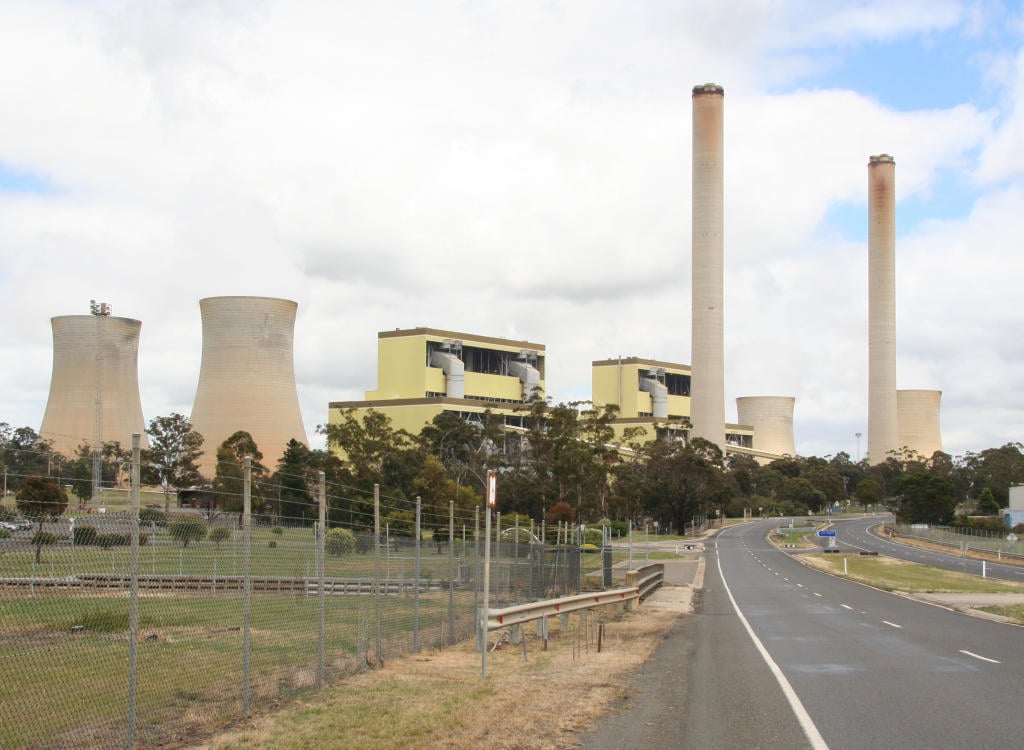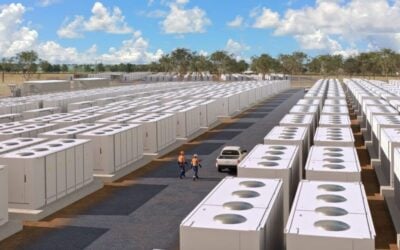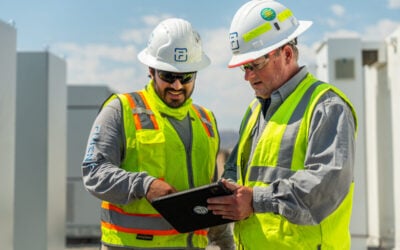
Alongside the unveiling of an energy storage deployment target, the government of Victoria announced funding support this week for two large-scale battery storage projects.
As reported by Energy-Storage.news on Tuesday (27 September), the Australian state’s government has set a target to deploy 6.3GW of short and long-duration energy storage by 2035, with an interim target of 2.6GW by 2030.
Enjoy 12 months of exclusive analysis
- Regular insight and analysis of the industry’s biggest developments
- In-depth interviews with the industry’s leading figures
- Annual digital subscription to the PV Tech Power journal
- Discounts on Solar Media’s portfolio of events, in-person and virtual
The ambitious target was welcomed by Dr Bruce Mountain, an energy economist at the Victoria Energy Policy Centre (VEPC), who said the details still need to be worked out, but that the setting of a target signified the government’s recognition of the key role of storage in the energy transition.
At the same time, State Premier Daniel Andrews and energy minister Lily D’Ambrosio announced a AU$157 million (US$102.03 million) funding package for renewables and storage projects in the state, including AU$126 million for the two battery projects.
Both projects are ‘grid-forming’, meaning they will be equipped with advanced inverters that can provide synchronous inertia to the grid – an important function in maintaining grid stability that historically has been provided by the rotating mass of large-scale centralised thermal power plants.
With more renewables coming onto the system and fossil fuels being retired, there is a growing need to supply what is sometimes called ‘synthetic inertia’ or ‘virtual inertia’ from inverter-based technologies, something the Australian Commonwealth government, via the national renewable energy agency ARENA, has also been keen to support. Australia’s most famous battery project, Hornsdale Power Reserve, was recently retrofitted with advanced inverters.
AU$119 million for Renewable Energy Zone project
The majority of that funding, AU$119 million, will go to a 125MW/250MWh battery energy storage system (BESS) and grid-forming inverter project in the state’s Murray Renewable Energy Zone.
It is one of many Renewable Energy Zones (REZs) planned by states across Australia and the money is coming from a total pot of funding for the zone worth more than half a billion dollars.
Shortly after the funding announcement, Australian renewable energy developer and energy storage investor Edify Energy said it had been signed up by the Australian Energy Market Operator (AEMO) for a System Support Services contract to service the BESS.
Called Koorangie Energy Storage System (KESS), the battery system will enable the REZ to host up to 300MW of renewable energy generation. It will participate in energy and ancillary services markets, while also providing that grid-forming function.
It’s expected to go into commercial operation in 2025 for a planned lifetime of 25 years and AEMO said it selected Edify as the provider of non-network services after a competitive solicitation process that began in August 2021.
AEMO was appointed by D’Ambrosio, whose full portfolio title is Minister for Energy, Environment and Climate Change, to procure non-network services for two other REZ projects.
“This cutting-edge technology will support our new energy storage targets – the biggest in Australia – and help with our smooth transition to renewables, saving Victorian families money on their energy bills and slash our state’s emissions for generations to come,” Lily D’Ambrosio said.
Energy Innovation Fund winner
Getting AU$7 million support, the other large-scale battery project is a 100MW/200MWh system, with the funding coming from a separate state government pot, the Victoria Energy Innovation Fund (EIF).
It is being developed by FRV Australia, the local subsidiary of Fotowatio Renewable Ventures, the renewables developer owned by Saudi Arabia’s Abdul Latif Jameel Energy, together with OMERS, an infrastructure investment group from Canada.
It builds on FRV Australia’s portfolio of close to 800MWp of solar PV projects in Australia. The company is also currently working on another much smaller utility-scale grid battery system, a 5MWh co-located BESS at Dalby solar farm in Queensland.
In 2021, OMERS bought a 49% stake in FRV Australia and at the time it was claimed that the developer’s pipeline of development opportunities in battery storage was around 1.3GWh, together with about 2.7GWdc of PV developments and 637MWdc of solar plants either in operation or under construction.
OMERS also holds stakes in US renewables developer Leeward Energy and Indian independent power producer (IPP) Azure Power Global.
The project will be built in Terang, in Victoria’s Barwon South West region, with some media reports in Australia citing its total expected cost at AU$125 million.
It’s the only battery project to win in the state’s Energy Innovation Fund Round 2, alongside two bioenergy projects and a renewable hydrogen project with a total of AU$38.2 million funding for the four. Round 1 of the EIF was limited to support for offshore wind energy, but the second was open to all technologies that support the state’s net zero by 2050 policy target.
Coal plant closure brought forward
In related news, major Australia energy generator-retailer AGL said today that it has brought forward the closure date of its Loy Yang 2,225MW coal power plant to 2035 from 2045.
The 10-year acceleration for the retirement plan was welcomed by advocacy group Environment Victoria, but the group said it still fell well short on ambition. Environment Victoria noted that AGL shareholders had voted to adopt emissions targets that met the goals of the Paris Agreement.
The 2035 closure date was a timeline “inconsistent” with the Agreement’s aim of limiting global warming to 1.5 degrees Celsius, the group said, calling for closures of all Victoria’s coal plants by 2032, based on energy transition scenarios modelled by AEMO.
In late 2021, AGL got local authority planning approval to put a 200MW/800MWh BESS at the site of Loy Yang, which has a co-located coal mine next to its power station.






